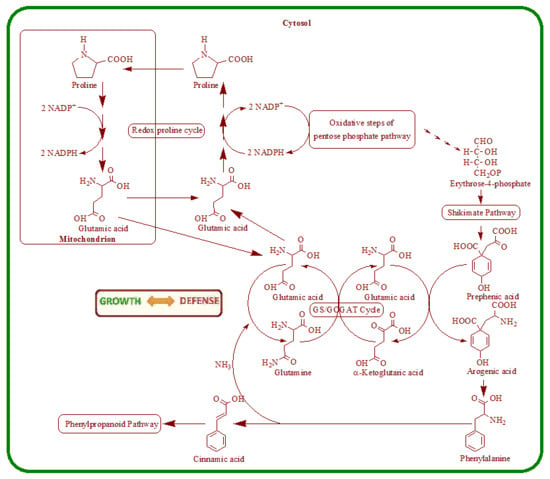Carbon Fluxes between Primary Metabolism and Phenolic Pathway in Plant Tissues under Stress
Abstract
Share and Cite
Caretto, S.; Linsalata, V.; Colella, G.; Mita, G.; Lattanzio, V. Carbon Fluxes between Primary Metabolism and Phenolic Pathway in Plant Tissues under Stress. Int. J. Mol. Sci. 2015, 16, 26378-26394. https://doi.org/10.3390/ijms161125967
Caretto S, Linsalata V, Colella G, Mita G, Lattanzio V. Carbon Fluxes between Primary Metabolism and Phenolic Pathway in Plant Tissues under Stress. International Journal of Molecular Sciences. 2015; 16(11):26378-26394. https://doi.org/10.3390/ijms161125967
Chicago/Turabian StyleCaretto, Sofia, Vito Linsalata, Giovanni Colella, Giovanni Mita, and Vincenzo Lattanzio. 2015. "Carbon Fluxes between Primary Metabolism and Phenolic Pathway in Plant Tissues under Stress" International Journal of Molecular Sciences 16, no. 11: 26378-26394. https://doi.org/10.3390/ijms161125967
APA StyleCaretto, S., Linsalata, V., Colella, G., Mita, G., & Lattanzio, V. (2015). Carbon Fluxes between Primary Metabolism and Phenolic Pathway in Plant Tissues under Stress. International Journal of Molecular Sciences, 16(11), 26378-26394. https://doi.org/10.3390/ijms161125967







